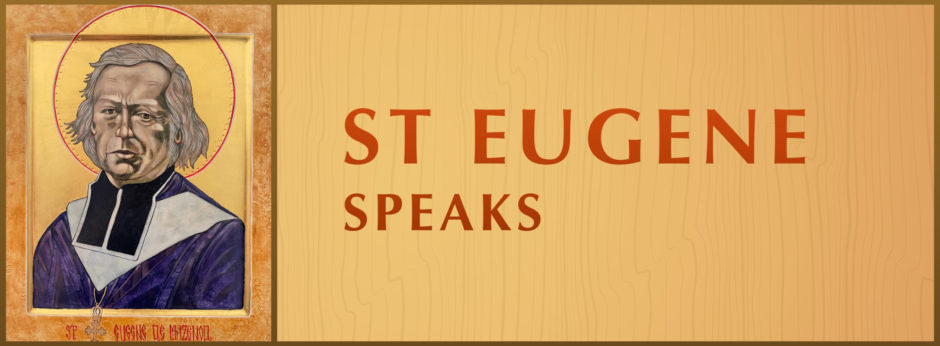Because the Calvaire in Marseille was a shrine with its central focus on the Crucified Savior, the lay people who associated themselves with it placed themselves under the protection of Our Lady of Sorrows – with the scapular as a distinctive sign of belonging. They wanted to imitate Mary, who stayed at the foot of the Cross of her Son.
I reproduce these details because they form part of the history and traditions of our Mazenodian family – as Rey describes:
That same day, May 3 at the end of the general procession, the Vicar General solemnly blessed the representations of the Stations of the Cross that had been erected and led the people in praying before them.The canonical creation of the two associations had been promulgated before the Mass sung by the Vicar General. The priests had given their consent to the Regulations that the Archbishop of Aix had approved only on condition that there be complete agreement between his Vicar General, all the pastors and the Missionaries.The vicar general blessed and distributed the scapular of our Lady of Sorrows, the distinguishing sign adopted for the members of both confraternities.
Rey I chapter VII
“The cross is laid on every Christian. It begins with the call to abandon the attachments of this world. It is that dying of the old man which is the result of his encounter with Christ. As we embark upon discipleship we surrender ourselves to Christ in union with His death — we give over our lives to death. Since this happens at the beginning of the Christian life, the cross can never be merely a tragic ending to an otherwise happy religious life. When Christ calls a man, He bids him come and die. It may be a death like that of the first disciples who had to leave home and work to follow Him…” Dietrich Bonhoeffer

There is so much here to focus on and I will need to return to it again and again during my day. “….the scapular of our Lady of Sorrows, the distinguishing sign adopted for the members of both confraternities.” I find myself focussing on ‘the distinguishing sign’ and what that means to me. In today’s society we seem to not always want to wear something that sets us apart, that is not ‘fashionable’. And in some circles the wearing of a cross can been seen as a fashion statement in itself. There are many reasons given and I try not to always question and judge. But there are times when uniforms and identifying signs can be good – as is the case with policemen when you are in need of help. Even the cross, particularly the Oblate cross. Recently in Europe there were a couple of times where I was to be met and picked up by an Oblate priest – the instructions did not come with any pictures so I had no idea of what the person would look like. I entered the hotel lobby and looked, I got off of the plane, went through customs, and looked. In each case – I saw the cross, an identifier of who that person was, and so I was able to go up and say I’m Eleanor Rabnett, from Canada. The smiles, the welcome, I was where I was supposed to be. A visible sign of who a particular person says that they are. The cross, not always visible but never-the-less worn, pride, dignity and joy. The cross, a proclamation in itself.
The cross – both on the outside and the inside. A symbol of who I am and how I live. “…the cross can never be merely a tragic ending to an otherwise happy religious life. When Christ calls a man, He bids him come and die.” Dietrich Bonhoeffer I think of the cross, the ultimate symbol of love, the dying of self in order to live, the dying of self to be filled with joy, the dying of self to come to know exactly who we are. This is for all of us, not just for a few. Meriam-Webster defines religous as: : relating to or manifesting faithful devotion to an acknowledged ultimate reality or deity ; of, relating to, or devoted to religious beliefs or observances ; scrupulously and conscientiously faithful. I reread the title of todays writing “The development of the shrine of Christ the Saviour”. I think this morning of the Lucys and the Ludmilas and so many more and what they are proclaiming. I give thanks.